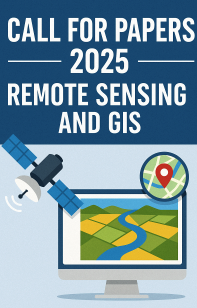Study of Digital Surface Data for Soils and Flood Risk Areas Mapping in Sudano-Sahelian Zone (Mayo-Danay Division, Far North Cameroon)
Research Article- DOI: 10.23953/cloud.ijarsg.501
Keywords:
Soil; Flood risks; Mapping; Mayo-Danay Division; Spatial dataAbstract
In general, living close to a river is advantage, but there is always of flooding risk, that recurrence in recent decades provokes serious material damage and loss of life. Thus, in order to protect environmental health, economic viability and human activity zones of Mayo-Danay, a careful study of components of natural environment, mainly soil, has proved essential. Clearly, use of GIS in management of natural disasters is most relevant method, designed on integration, Multicriteria Analysis (MCA) and spatial data. Thus, Digital Elevation Model is obtained by manual digitization of contour lines, in order to define the large pedological sets on which wells have been opened, profiles described, soil samples taken and analyzed in laboratory. Main results reveal that soils are sandy to clayey, with neutral and basic pH (7 to 8), high CEC and low organic matter. While, quartz is predominant, associated with smectites, illites, feldspars and iron oxyhydroxides. Updated soil map shows five soil units (1) vertisols with hydromorphic characters (26%), (2) tropical ferruginous soils (32%), (3) less evolved hydromorphic soils (15%), (4) halomorphic vertic soils (9%), and (5) hydromorphic vertic soils (18%). It is an excellent tool for work and research, that responds to agronomic and development problems. It is therefore an excellent tool for work and research, which responds to agronomic and development problems. The multi-criteria spatial analysis establishes hazard and vulnerability, crossing of which gives of flood risk areas map, according to hazard level, very high (12%), high (16%), moderate (14%), low (30%) and very low (28%) risks. For this purpose, it emerges that rainfall is relatively low (700 mm/year), but falls very abruptly during short periods, at high intensity with flows exceeding the infiltration capacities. Morphology of low-slope "yayrés" (280 m) (2‰) is bordered by high landscape (500 to 1400 m) that prevent flow of many rivers that converge into plain. Sandy soils dominated by quartz favor fast rising in water table, while very clayey soils governed by 2/1 clayey (smectites) whose behavior induce waterproofing and intense surface runoff that generate flooding. Evidently, land use change leads to transformation of natural spaces into agricultural and urban environments, which makes soils more compact and impermeable, favorable to flooding.
Keywords Soil; Flood risks; Mapping; Mayo-Danay Division; Spatial data
DOI: https://doi.org/10.23953/cloud.ijarsg.501
Downloads
Published
How to Cite
Issue
Section
License
Copyright (c) 2021 International Journal of Advanced Remote Sensing and GIS

This work is licensed under a Creative Commons Attribution 4.0 International License.



